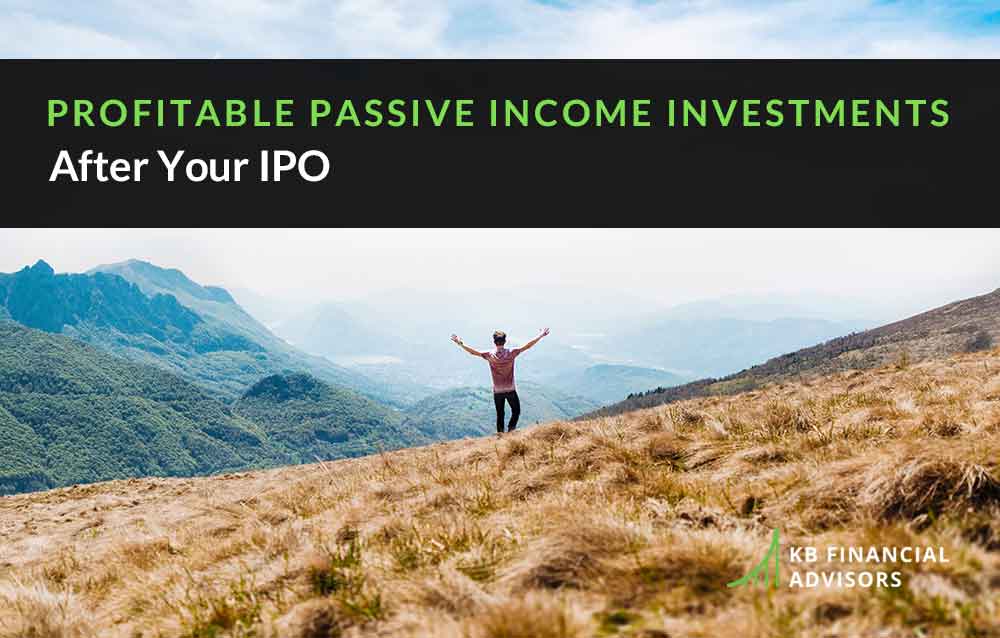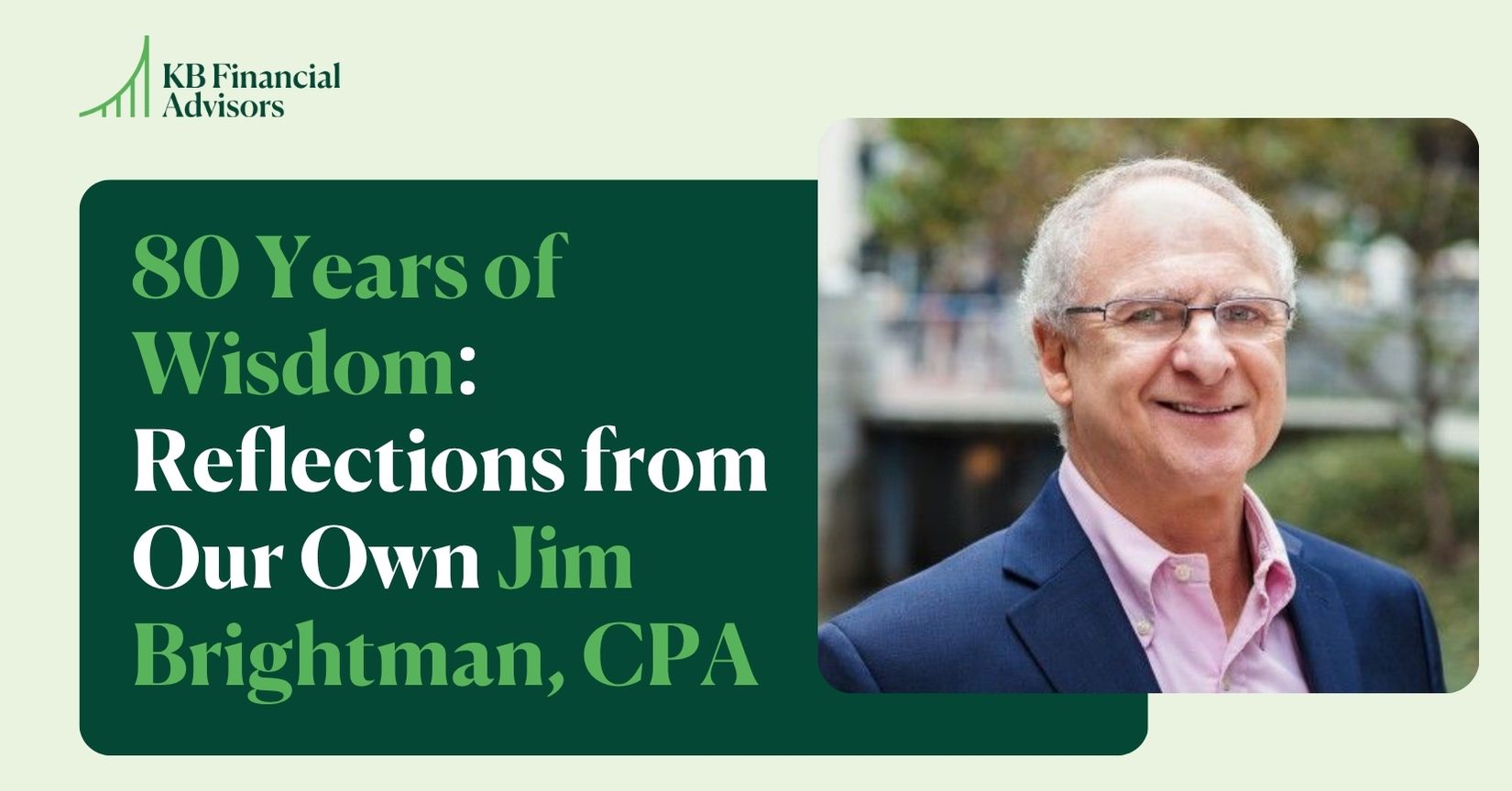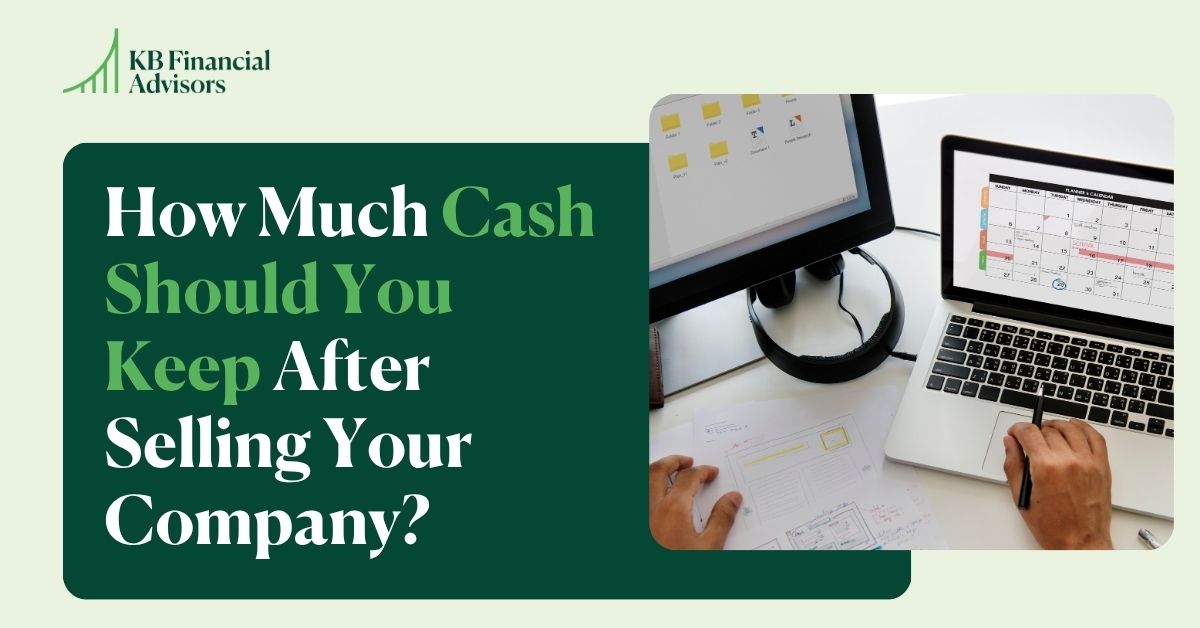Anytime someone talks about financial freedom, you hear about passive income. It’s most peoples’ fantasy.
After all… why wouldn’t it be?
Who wouldn’t want to have enough money coming in to pay their bills without having to trade 40+ hours for it every week?
The idea of it feels somewhat mystical, and while solid passive income investments are technically possible for everyone, few actually achieve true financial freedom through passive income before their retirement years.
Fortunately for tech employees about to go through an IPO, they’ve got a BIG opportunity to make passive income investments to support their future.
So once the IPO is on the table… what’s next?
How should you invest your funds from the IPO to achieve your financial goals? And where does creating passive income fit in?
In this post, I’m going to walk through how to choose the best passive income investments, the mistakes to avoid, and the best ways to put the dollars from your stock options to work.

What is ‘Passive Income’?
When most people say passive income, they’re referring to income from investments… with the goal of that income eventually replacing their salary.
The idea of replacing your income is key: the goal isn’t to just collect some money off your investments, it’s to create a paycheck replacement. While you’re working 40+ hours per week, for example, you get paid twice per month.
But if you stopped working, that money would stop coming in. The goal with smart passive income investments is to still be able to live your normal life, even if you stop working.
This passive income can from a number of different investments:
- Interest payments on bonds
- If you invest in a bond fund, for example, you’ll receive regular, recurring interest payments.
- Dividend-paying stocks
- This happens when companies take their profits and divide them out to holders in the company’s stock.
- Rental income from real estate
A common idea that gets rolled in with the three passive income sources above is to invest $1 million, so you can live off the income (or interest) generated from that $1 million worth of investments.
The 4% rule is a common rule of thumb applied to this type of passive income investing. The idea is that you can withdraw 4% of your investment total every year and never run out of money. (So, if you invest $1 million, you could take out $40,000 each year, and never run out.)
Two Problems With The ‘Paycheck Replacement’ Idea
Replacing your paycheck sounds great in theory:
All you have to do is take the money from your IPO (or tender offer), and invest it to generate income so you can have the money you need to live, even if you stop working.
However, there are two big problems with this idea that don’t get talked about enough:
1) This investing concept is tied to a paycheck mindset.
The paycheck mindset is when everything about your financial life revolves around your paycheck. (Whether you realize it or not.)
First, you get paid.
Then, you use that money to pay your bills.
Then, you get paid again.
And the cycle repeats itself.
It’s a constant cycle of payday > expenses > payday > expenses.
It’s a great setup for when we start our careers and start learning how to budget, but at a certain point, it begins to break down.
And to me, passive income is a great example of where this mindset starts to fall apart.
If you hold onto the paycheck mindset, you might start to make some passive income investment decisions that produce income in the short-term, but in the long-term generate less wealth throughout your life.
So when you get a windfall of money from an IPO, are you investing the dollars to give you income… or are you investing to build your balance sheet and your net worth?
While having a monthly amount of income and a budget is still important, when you have actual investments, you’re playing a much bigger game than just paying your bills and getting by.
But don’t worry, I get it: the paycheck mentality can be tough to break out of. Having a predictable paycheck provides security, so it’s natural to want to replicate that. And while the balance sheet mentality gives you the potential to generate more wealth over time, it’s also less predictable.
We’re going to assume that you’re not going to retire just because the IPO happened, and that you will, in fact, be keeping your paycheck for a while. By acknowledging that you’re going to be keeping your paycheck for the time-being, you can disconnect a little bit from the “income replacement” mindset, and think more about the big picture of your balance sheet.
2) Paycheck-only thinking can lead to poor investment choices.
Investing for income alone may actually lower your expected returns.
If you look at dividend stocks, for example, they tend to have lower expected returns over time than the stock market as a whole. The same thing goes for buying a bunch of bonds for interest income: those bonds have historically produced lower returns than stocks.
If you go too far with pursuing the paycheck-replacement idea of passive income, your decisions will be more about income, and less about overall investment returns.
Think about this for a second:
How did you get into the position of having all this extra cash from your stock options after an IPO?
You made an “investment” via your career in something that wasn’t guaranteed. In fact, it might have paid you a slightly lower salary if you joined a startup, but it had big potential, long-term pay off.
It was the exact opposite of income-based investing. If you’d been focused only on paycheck-based income, you might have gone with a different job with a higher salary, but without the stock options.
I’m not suggesting you try to replicate the IPO scenario by buying a bunch of high-growth stocks with your IPO payout, but I definitely don’t want you to invest for short-term, immediate income only.
Choosing Smart Passive Income Investments: Stocks, Bonds, & Mutual Funds for a Diversified Portfolio
Now that you know what mistakes to avoid, let’s get to the fun part: the nuts and bolts of creating passive income through investments. ????
The first thing we’ll look at is creating passive income through a diversified portfolio of stocks, bonds, and mutual funds.
To do this, I’ll use a specific mutual fund as an example: Vanguard Lifestrategy Moderate Growth. (Ticker VSMGX)
This is an asset allocation fund, meaning it maintains a static allocation of 60% stocks and 40% bonds, which is a pretty common mix. Historically, with this mix, you get a lot of the returns you’d get with all stocks, but with less volatility compared to buying 100% stocks… a smoother ride overall with less dramatic drops.
It’s also a fund of funds: the Vanguard Lifestrategy funds essentially just buy other Vanguard funds: Total Stock, Total Bond, Total International Stock, and Total International Bond.
Since its inception, it’s averaged an annual return of 8.01%. (You can check all this information out on Vanguard’s site.)
So, if you invested $1 million into this fund, then one, average, year later, it would be worth $1,080,100.
If you weren’t working and needed some passive income, you could harvest your gains (read: passive income) for living expenses… which would be that $80,100 of value you gained.
(Note: I wouldn’t necessarily recommend investing $1 million from your IPO into this fund, this is just an example.)
So… where did this $80,100 in passive income come from?
Each of the funds within VSMGX are constantly moving, and if you drill down, each of the stocks and bonds within those funds are constantly moving as well. The values are changing daily plus the dividends and interest you receive should be reinvested to buy more of the fund. Over the year, some things go down, some things go up, and if enough things go up by the end of the year, you have more than you started with. These are your gains.
At the end of the year, you can harvest those gains for passive income.
The way we do this with our clients is to do an annual rebalance each year. Our clients, for example, may use seven or more stock and bond mutual funds. When they need some income, we harvest growth by rebalancing.
So for example, if we have a fund that we want 10% of your portfolio to be in, and it’s grown to 15%, we can harvest that extra 5% to create passive income.
This way you are creating passive income through the growth in value (gains) of your investments instead of through regular, recurring interest and dividend pay outs.
Passive Income Investments Through Real Estate
Real estate is another really popular way to generate passive income. The general idea is to buy some property, rent it out to tenants, and in doing so, create monthly, passive income. (It is a solid investing approach, and as a rule of thumb, we recommend real estate taking up 30% of your balance sheet.)
This seems simple, but let me give you a BIG word of warning:
Buying real estate as an investment is VERY different than buying real estate for personal use.
Don’t mix things up. Don’t try to buy a vacation property that will also generate income. I know it sounds good in theory, but it rarely works out in real life.
I see people trying this thinking, “I really like going to the mountains,” or “I really like going to the beach,” etc. They decide to buy real estate in locations based on what they like so they can use it for their own vacations, and then rent it out when they’re not there. (Rather than looking at the markets and making the best financial decision based on the numbers.)
The problem is, when you start with the idea of buying both a vacation and rental property in one, you’ll spend more on that property than you would if you were just buying it for an investment… and this is where the investment breaks down.
Far and away, the most important part about investment real estate is that the numbers HAVE TO make sense. You’ve got to use numbers to drive your investment decisions, NOT your personal vacation preferences.
When you start mixing investment property and personal property, it’s only a matter of time before you have an investment that won’t have cash flow because you’re putting money in every month instead of the property paying you every month.
In fact, the only way you could truly pull this off would be to buy a multi-unit building, living in one unit, and renting out the others.
Another thing to remember is that cash flow is more important than price appreciation when it comes to investment real estate, which is not the case when you’re buying a house for personal use.
People often make the mistake of investing in “hot” locations they think others like, because they assume the price of their investment will go up. The problem here is that if the area is already popular, the prices have probably already gone up, and the numbers for that area no longer make sense.
If you want to invest in real estate for passive income, start with the numbers. Once you know the numbers, then you can work backwards to a location, instead of starting with a location first.
Once you pick out an investment property for the sake of investing only, the next mistake to avoid is paying all cash.
Always, always make sure you get a fixed-rate mortgage.
Why?
Consider this:
$200,000 in cash can buy you $1 million in real estate with a 20% down payment and an $800,000 mortgage. (You’re getting $1 million in assets for only $200,000.)
With that $800,000 mortgage, your interest rate is fixed, your payments are fixed, and you get to keep 100% of all the future appreciation of the property.
Also, if you picked a highly rentable property, someone else is going to pay the mortgage for you. It can be tempting to pay cash for real estate and keep all the rent, but when you do that, you lose out in the big picture. Buying a $200,000 piece of property in cash will be worth a lot less over the long run than a $1 million piece of property with an $800,000 mortgage.
Can you see why keeping the balance sheet in mind is so crucial with passive income investments?
Another word to the wise: DO NOT get caught up in get-rich-quick schemes promised in real estate. The reality is that while real estate investments can be great, they will require more effort than investing in stocks and bond mutual funds or ETFs.
If you do want to get started with real estate investing, I suggest the BiggerPockets website for more industry-based information.
Passive Income Investments: Next Steps
I know I just gave you A LOT of information, but I do want you to walk away with this:
Passive income IS possible.
It’s probably just not going to look like what you’ve heard, and there are definitely some mistakes you want to avoid. ????
Focus on your balance sheet and invest for GROWTH, instead of just focusing on income and trying to replace your paycheck in the short-term.
The first step would be to work with a financial advisor to create a solid IPO plan, and then to put a plan in place for what to do with the post-IPO cash once it’s in your bank account.



